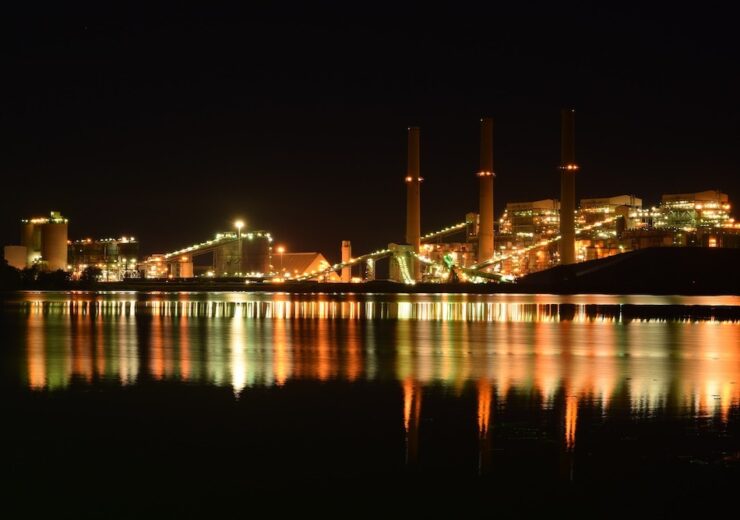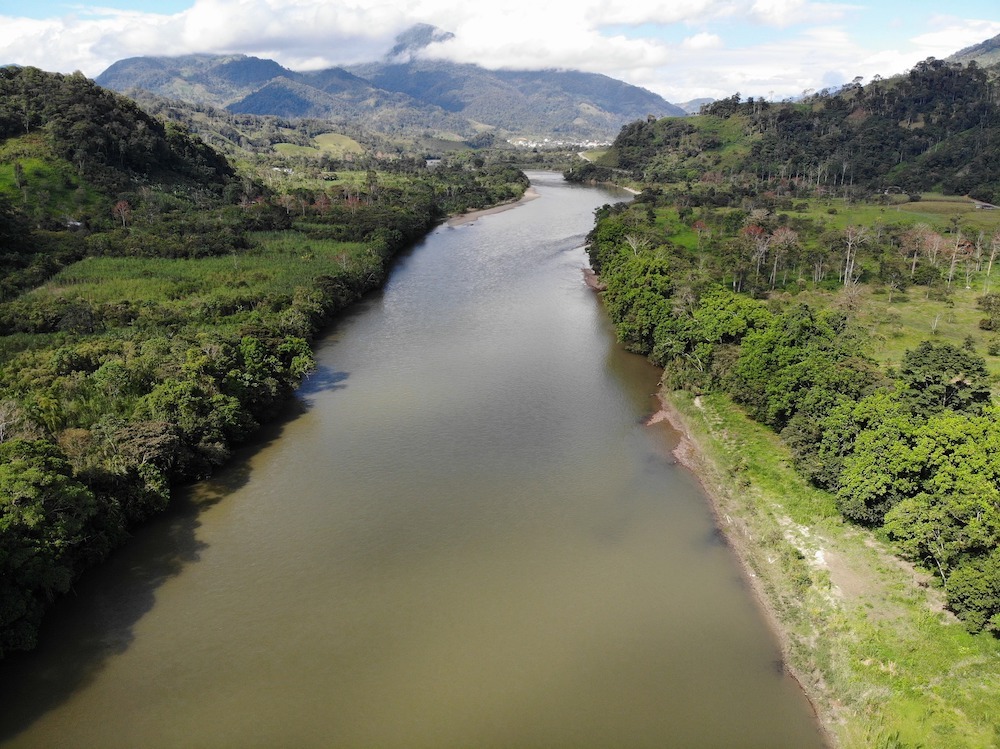Chemical recycling comes in four main forms - depolymerisation, solvolysis, gasification and pyrolysis - and is set to change the way pastic waste is managed

According to the OECD, plastics have an estimated 14% to 18% recycling rate across the world (Credit: Pixabay)
Over the past few years, chemical recycling has been increasingly seen as an effective way of tackling previously unrecyclable waste. NS Packaging’s Thomas Parker looks at how this new form of disposal could change the way such waste is managed.
For several years, all recycled plastic was disposed and repurposed in the same way — mechanically.
This form of recycling involves plastic waste — sorted by material type — milled and washed, passed through flotation separation, and then dried.
The resulting plastic flakes are then either used to produce new plastic materials or are processed in granulates beforehand.
This process, though incredibly widespread in terms of use, has several issues associated with it.
It’s hampered by contamination and a wide variety of plastic waste streams, leading to the recycled materials getting turned into less-valuable products.
This resulting in plastics having an estimated 14% to 18% recycling rate across the world, according to the OECD.
Dr Michael Dent, a technology analyst at independent market researcher IDTechEx, explains that, when recycling mechanically, businesses “essentially take the plastic, strip it down, grind it into pellets and remove all the impurities — re-extruding it and turning it back into plastic products”.
He adds: “This is problematic because it causes downcycling, which means that recycling methods are limited, so it can only be done two or three times before the plastic becomes ruined.
“This is because all sorts of different polymers don’t function very well with each other — and typically if there is any sort of contamination with other polymers, it can reduce the mechanical properties.”
Several experts and businesses see so-called chemical recycling techniques as a potential method to counteract the contamination and downcycling problems faced by mechanical recycling.
What is chemical recycling?
To start with, it is important to clarify a few things about chemical recycling
Firstly, “chemical recycling” as a description is itself not unanimously accepted, with phrases such as “feedstock recycling” also used to refer to the process.
Josse Kunst, the chief commercial officer of CuRe Technology — an organisation involved in this space — refers to the process as “molecular recycling” as “in general, people perceive chemicals incorrectly as equal to toxic”.
He adds: “I think that doesn’t help moving forward on the important topic of using our plastic resources well, especially with technology because we’re really purifying molecules in a way that is very low energy consuming and reuses all the materials.
“So we try to talk more about enhanced or molecular recycling.
“That may sound like marketing, but it makes people focus more on the positive side of what we’re trying to do.

“We should not shy away from making technology part of the solution, although a change in our consumption behaviour is also certainly needed.”
The recycling method encompasses a process by which a polymer is chemically reduced to its original monomer— a molecule that forms the basic unit for polymers — so it can eventually be processed and remade into new plastic materials.
Such technology has been used for nylon plastic — which can be used as fibres in textiles or as food packaging — with work being done to make it work for other resin types.
There are four main forms that chemical recycling comes in — these being depolymerisation, solvolysis, gasification and pyrolysis.
Depolymerisation is a recycling method where mono plastics — which refers to the use of just one type of material for a whole product and is traditionally found in food trays or plastic bottles — are turned back into monomers and can be re-polymerised into new products.
Solvolysis recycling sees the dissolution of a product and is used to break down certain plastics such as expanded polystyrene into monomers, with this process aided by solvents.
Chemical recycling: What is plastic gasification?
Over the past few years, two chemical recycling processes — plastic gasification and pyrolysishave — have become seemingly popular.
Gasification is a process that can turn unsorted, uncleaned plastic waste into syngas, which can be used as the building blocks for new polymers.
This method of recycling takes place in a gasifier, generally in a high-temperature or pressure vessel where oxygen and steam are in direct contact with the feed material.
Because of this, a series of chemical reactions occur that eventually lead to syngas and mineral residues.
Gasification is a process that has been around for more than 180 years and in the US was used to produce gas from coal.

It became popular again during both world wars, especially the Second World War as gasoline became scarce — with wood gas generators using gasification helping power about a million vehicles worldwide in 1945.
Early attempts to use the process for plastic waste have been reported since the 1970s, with it being increasingly highlighted because syngas can be used to produce many products and as fuel for fuel cells.
Gasification, which is often compared to incineration — where waste is destroyed by burning it — is seen by some as having both environmental and economic advantages.
This includes the fact that plants that use disposal methods produce significantly lower quantities of air pollutants, and reduce the environmental impact of waste disposal as it allows for the use of waste products as a feedstock.
It’s also claimed that the process can effectively compete in high-price energy environments to provide both power and products, and can use lower-priced feedstock and turn it into valuable items.
Chemical recycling: What is pyrolysis?
Pyrolysis is a form of thermal decomposition of materials in elevated temperatures in a chemically inactive atmosphere and involves a chemical composition change.
Explaining how this process works when it comes to plastic recycling, Dr Dent says: “What pyrolysis fundamentally does is it takes plastic and heats it in an oxygen-free atmosphere until it falls into its monomers and chemical constituents.
“This is beneficial because if plastic waste can be turned back into an oil-like product, it’s possible to generate virgin polymer out of it.
“Which means if this recycling method is used, it can get a plastic mechanically identical to the original.”
Commonly used in the treatment of organic materials, a form of pyrolysis dates back thousands of years in the Amazon rainforest and saw the charcoal-like substance used to enrich and stabilise the nutrient-poor rainforest soils.
Like gasification, pyrolysis was used during both the World Wars to produce transportation fuel — with it estimated that globally there were close to nine million vehicles running on bio-derived gas.
Modern developments to the system emerged on several fronts in the late 1950s, with Bell Laboratories in the US launching research development programmes to examine the usefulness of pyrolysis in 1958.
Most of these systems were focused on the production of gas from waste materials where firebrick ovens used indirect heat in a low oxygen environment.
These were batch processes where ovens were filled and sealed before heat was applied.
Commercially, it was first introduced into the hospital sector in the early 1970s, however, due to low-volume capacity they had limited success.

One company using plastic waste as a pyrolysis feedstock is oil and gas company Royal Dutch Shell — aiming to use it to make high-end chemicals.
It also wants to use the technique, which it considers is a “breakthrough for hard-to-recycle plastics”, to advance its ambition to use one million tonnes of plastic waste a year in its global chemical plants by 2025.
To assess how effective pyrolysis can be to help tackle the plastic waste problem, Dr Dent and IDTechEx conducted a study.
One area where they found that the technique could excel is dealing with contaminated waste — working effectively with almost any type of common plastic waste, whether mixed or not.
It also discovered that, because it’s chemically breaking down material into its constituent parts, it doesn’t matter where it is in the recycling chain.
Dr Dent adds: “It’s less tolerant for things like PVC, which is tricky to remove and can also corrode equipment.
“But for the vast majority of hydrocarbon polymers and most non-allergen containing and not overly oxygenated polymers, it’s an option.
“Pyrolysis could also be potentially used for biomass as well, and a lot of the technology developments have been done for biomass that contains way more oxygen than any plastic waste.”
Dr Dent’s investigation into the pyrolysis process does also highlight some of its downsides — most notably that heating plastics until they degrade requires a lot of energy.
The resulting oil coming out of this often requires extensive processing before it can be used in the same processes as crude oil.
It also highlights contamination as an issue — as chlorine- and oxygen-containing polymers can lead to acidic products that can cause harm.
How CuRe Technology is using molecular recycling to tackle polyester waste
Polyester as a material is incredibly popular — with it estimated that around 75 million tonnes are produced worldwide in a year.
The vast majority of used polyester — such as packaging, bottles, food trays, carpets and strapping — however is typically difficult to recycle as it’s coloured, contains other polymers or difficult-to-recycle additives.
CuRe Technology is aiming to improve how this material is managed.
It has been set-up by a consortium of recycling innovators and experts headed by Dutch recycling groups Morssinkhof Group and Cumapol — with design company DSM-Niaga and NHL Steden University of Applied Science also involved.
Kunst, who is involved in CuRe Technology, believes polyester is at its core “a fantastic circular polymer”.
He adds: “It’s reversible to make, you can extend the molecular chain easily, and break it down again and again.
“That gives you the ability, if you design a product well and you can take things like contaminations out, to potentially make a really massive breakthrough in how much we recycle and avoid using fossil resources to make plastics.”
The organisation has constructed a pilot plant in the Dutch town of Emmen that has already begun breaking down polyester and purifying it — and it’s expected to reach full commercialisation in two or three years.
A significant part of how CuRe Technology sets itself apart from its competitors is the fact that it intends to be involved across a piece of waste’s recycling lifecycle.

Kunst explains: “We go all the way from collected waste to a final product, so we have experience in waste preparation — shredding, washing and milling — all the way on towards making products as fibres or preforms out of recycled polyester.
“And thanks to our partnership with NHL Stenden, we also have material science oozing out of the building and access to a large talent pool of young Dutch scientists-to-be.
“That’s why we really put a lot of effort into the second step which is depolymerisation — breaking out the polyester.
“I say only, that’s already a massive feat, but what sets us apart is a couple of things.
“We go all the way from collected waste to a final product, so we know everything about waste preparation – shredding, washing, and milling — that comes into our construction partner.
“We also do it in a unique way because we’re one of the few that do it in a continuous process and not in a batch process.
“And that’s relevant in two ways, one is you can steer the whole process much more accurately, and secondly it’s much cheaper.”
Another reason why CuRe Technology’s work is unique, is that the plant doesn’t use a catalyst to speed up the chemical reaction during the recycling process, which means no catalyst needs removing, saving additional energy costs.
To recycle material, it uses a partial depolymerisation process by shortening polymer chains just enough to allow for the removal of impurities.
Explaining how this process compares to mechanical and other forms of molecular recycling, Kunst says: “Imagine a polymer or plastic as a chain of 500 Lego blocks, with mechanical recycling you just hash them up and make a new chain out of it, but you don’t break down the actual chain.
“With chemical recycling, you break it down — and most people do this by breaking it down to only one individual block, which means you need to put a lot of energy in to really break it down to its core, and then build it back up completely.
“What we do is we break it down to five to eight blocks, keep it at a high temperature, purify it and directly repolymerise it back into those 500 blocks.”
Because of this purification process, it’s possible that waste could be recycled indefinitely through the plant — as it’s purifying the molecules to the same quality as virgin.
Added to this, according to CuRe Technology, the recycling process will be the most sustainable molecular recycling process for polyester.
Kunst explains: “If you’re making polyester out of virgin materials, you typically spend about 2.2 kilogrammes of CO2 per kilo of polyester.
“If you do mechanical recycling, which is always the best way to recycle if you can, that uses about 0.3 to 0.4 kilogrammes of CO2 per kilo.
We’ve seen competing technologies with chemicals of about 1 to 1.4 kilogramme of CO2 per kilo of polyester, we are at 0.5 to 0.6 — so we are twice as good as competing for chemical recycling and only 27% versus making polyester out of oil.
“This would need to be confirmed on a full scale commercially, but the indication is that we are at least going in the right direction.”
